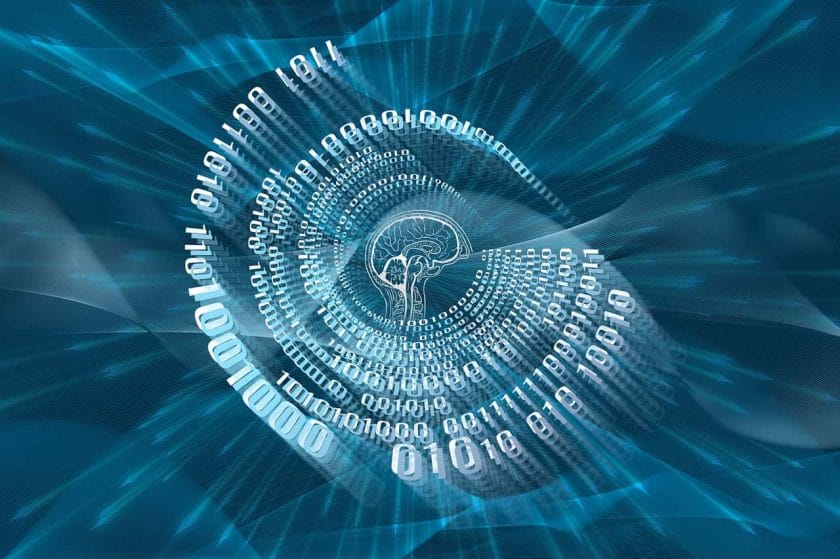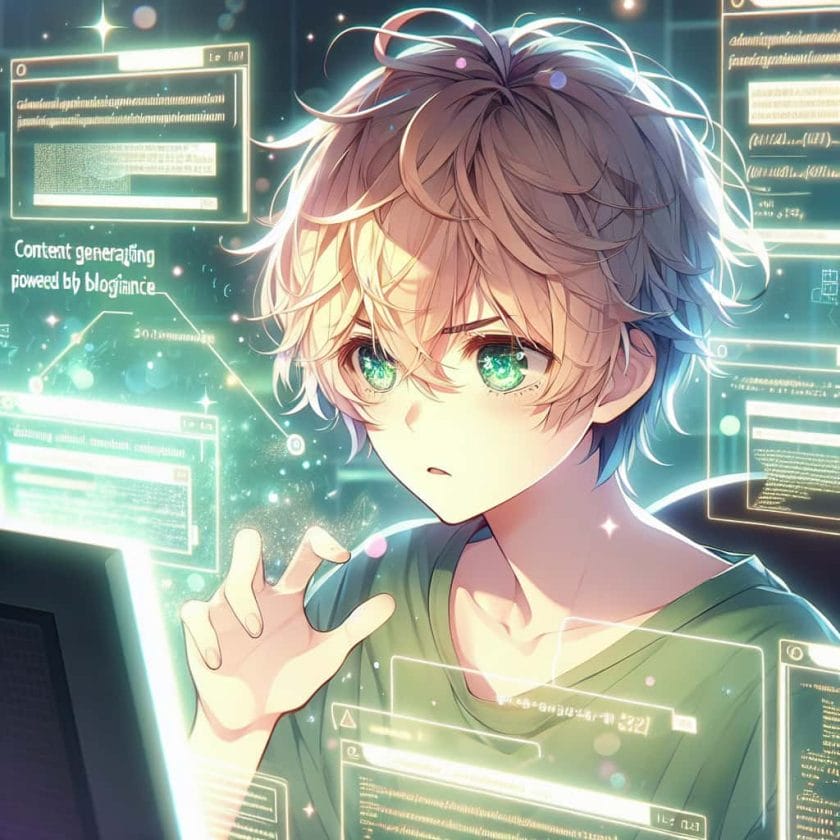The question of whether bits possess artificial intelligence has been a topic of debate in the tech world.
What is the definition of artificial intelligence?
Defining AI
As an AI expert, I often get asked what exactly artificial intelligence means. In simple terms, AI refers to the ability of machines to perform tasks that would normally require human intelligence. This includes things like problem-solving, decision-making, and natural language processing.
The Two Types of AI
There are two main types of AI: narrow or weak AI, and general or strong AI. Narrow AI is designed to perform a specific task, such as playing chess or recognizing faces in images. General AI, on the other hand, is capable of performing any intellectual task that a human can do.
The Importance of Data
One key component of artificial intelligence is data. Machine learning algorithms rely heavily on large amounts of data in order to learn and improve over time. This means that companies and organizations need to have access to high-quality data in order to develop effective AI systems.
When was the concept of artificial intelligence first introduced?
A Brief History
The idea of creating machines that could think like humans dates back centuries. However, it wasn’t until the mid-20th century that the term “artificial intelligence” was coined by computer scientist John McCarthy. McCarthy organized a conference at Dartmouth College in 1956 where he brought together researchers from various fields to discuss the possibility of creating intelligent machines.
Early Developments
In the decades following the Dartmouth Conference, researchers made significant progress in developing early forms of artificial intelligence. One notable example was IBM’s Deep Blue chess-playing computer, which famously defeated world champion Garry Kasparov in 1997.
Recent Advancements
In recent years, advances in machine learning and deep learning have led to significant breakthroughs in the field of artificial intelligence. These include things like self-driving cars, voice assistants like Siri and Alexa, and facial recognition technology.
What are some examples of artificial intelligence in use today?
Voice Assistants
One of the most common examples of AI in use today is voice assistants like Siri and Alexa. These digital assistants use natural language processing to understand spoken commands and provide responses or perform actions accordingly.
Self-Driving Cars
Another example of AI in action is self-driving cars. These vehicles use a combination of sensors, machine learning algorithms, and real-time data to navigate roads and make decisions about speed, direction, and braking.
Recommendation Systems
Many online platforms also use AI-powered recommendation systems to suggest products or content to users based on their past behavior and preferences. This includes things like Netflix’s personalized movie recommendations or Amazon’s product suggestions.
How does artificial intelligence differ from traditional programming?
Rules-Based vs Learning-Based
Traditional programming relies on a set of predefined rules or instructions that tell a computer what actions to take under certain circumstances. In contrast, artificial intelligence uses machine learning algorithms that are designed to learn from data and improve over time without being explicitly programmed for each possible scenario.
Flexibility
Another key difference between traditional programming and AI is flexibility. Traditional programs are typically designed for specific tasks or applications, while AI systems can be adapted to new situations or environments as needed.
Human-Like Decision Making
Finally, one major advantage of AI over traditional programming is its ability to make human-like decisions based on complex data sets. This allows machines to perform tasks that would be difficult or impossible for humans alone, such as analyzing vast amounts of medical data to identify potential treatments for diseases.
Can machines really think and reason like humans do?
The Turing Test
The question of whether machines can truly think and reason like humans has been the subject of much debate over the years. One common benchmark for measuring machine intelligence is the Turing Test, which involves having a human evaluator engage in a conversation with both a human and a machine without knowing which is which. If the evaluator cannot consistently distinguish between the two, then the machine is said to have passed the test.
Limited Capabilities
While machines are capable of performing many tasks that would normally require human intelligence, they are still limited in their capabilities. For example, while an AI system may be able to recognize faces or translate languages, it does not possess consciousness or emotions like a human being does.
Evolving Technology
That being said, advances in AI technology are allowing machines to perform increasingly complex tasks and make more sophisticated decisions. It’s possible that we may one day develop machines that are capable of true human-like reasoning and decision-making, but we’re not quite there yet.
What are some common applications of artificial intelligence in industry?
Manufacturing
One area where AI is already having a significant impact is manufacturing. AI-powered robots can perform repetitive tasks more quickly and accurately than humans, leading to increased efficiency and productivity on factory floors.
Customer Service
AI-powered chatbots are also becoming increasingly common in customer service settings. These bots can answer basic questions and provide support to customers 24/7 without requiring human intervention.
Financial Services
In the financial services industry, AI is being used for things like fraud detection and risk management. Machine learning algorithms can analyze vast amounts of data to identify potential threats or opportunities for investment.
How can artificial intelligence be used to improve healthcare outcomes?
Predictive Analytics
One way that AI is already being used in healthcare is through predictive analytics. Machine learning algorithms can analyze patient data to identify patterns and predict potential health issues before they become serious.
Personalized Medicine
AI is also being used to develop personalized treatment plans for patients based on their individual genetic makeup and medical history. This allows doctors to tailor treatments to each patient’s unique needs, improving outcomes and reducing side effects.
Robot-Assisted Surgery
Finally, robot-assisted surgery is becoming more common in hospitals around the world. These machines use AI-powered sensors and cameras to assist surgeons during procedures, leading to more precise and efficient surgeries with fewer complications.
Are there any ethical concerns surrounding the development and use of AI technology?
Data Privacy
One major concern with AI technology is data privacy. As machines become better at analyzing large amounts of personal data, there is a risk that this information could be misused or exploited by individuals or organizations.
Job Displacement
Another ethical concern related to AI is job displacement. As machines become better at performing tasks that were previously done by humans, there is a risk that many jobs will become obsolete, leading to unemployment and economic disruption.
Bias and Discrimination
Finally, there are concerns about bias and discrimination in AI systems. If these systems are trained on biased data sets or designed without considering the needs of all users, they may perpetuate existing inequalities or lead to unfair outcomes.
What are some potential risks associated with the increasing use of AI in society?
Cybersecurity Threats
One potential risk associated with the increasing use of AI is cybersecurity threats. As machines become more connected and integrated into our daily lives, they may become vulnerable to hacking or other forms of cyber attack.
Autonomous Weapons
Another potential risk is the development of autonomous weapons systems that could make life-or-death decisions without human intervention. This raises ethical concerns about accountability and the potential for unintended consequences.
Social Disruption
Finally, there are concerns about the potential for AI to disrupt social norms and structures. As machines become more advanced, they may replace humans in a variety of roles, leading to economic disruption and social upheaval.
How can we ensure that AI technologies are developed and used responsibly?
Ethical Guidelines
One way to promote responsible development and use of AI is through the creation of ethical guidelines or codes of conduct. These can help ensure that AI systems are designed with consideration for human values and rights.
Transparency
Another important factor is transparency. Companies and organizations should be transparent about how their AI systems work, including how data is collected, analyzed, and used.
Collaboration
Finally, collaboration between experts in various fields is crucial for ensuring responsible development and use of AI technology. This includes not only computer scientists and engineers but also ethicists, policymakers, and members of affected communities.
Is it possible for AI to become more intelligent than its human creators?
The Singularity
The idea that machines could one day surpass human intelligence is known as the singularity. While some experts believe that this scenario is possible or even inevitable, others argue that it’s unlikely due to inherent limitations in machine learning algorithms.
Limited Capabilities
While machines are capable of performing many tasks faster and more accurately than humans, they lack the creativity, intuition, and emotional intelligence that make humans unique. It’s possible that we may develop machines that are more intelligent than humans in certain areas, but it’s unlikely that they will ever surpass us in all respects.
Collaboration
Another possibility is that humans and machines will work together to achieve greater levels of intelligence and problem-solving ability. This could involve developing new forms of human-machine interaction or creating hybrid systems that combine the strengths of both.
What is the difference between narrow and general artificial intelligence?
Narrow AI
Narrow or weak AI refers to systems that are designed for a specific task or application. These systems can be highly effective at performing their intended function but lack the flexibility and adaptability of more advanced AI systems.
General AI
General or strong AI, on the other hand, is capable of performing any intellectual task that a human can do. These systems are designed to learn from experience and improve over time without being explicitly programmed for each scenario.
The Turing Test
One way to distinguish between narrow and general AI is through the Turing Test. While a narrow AI system may be able to fool a human evaluator into thinking it’s intelligent for a specific task, a general AI system would be able to consistently pass the test across a wide range of tasks and scenarios.
How might advances in AI impact job markets and employment opportunities in the future?
Automation
One potential impact of advances in AI is increased automation in various industries. This could lead to job displacement as machines become better at performing tasks previously done by humans.
New Opportunities
However, there are also opportunities for new types of jobs to emerge as a result of advances in AI technology. For example, there may be increased demand for workers with skills in data analysis, machine learning, and robotics.
Education and Training
To prepare for these changes, it’s important for individuals and organizations to invest in education and training programs that will help workers develop the skills needed for the jobs of the future. This may include things like coding boot camps, online courses, or apprenticeship programs.
Can AI be used to predict or prevent natural disasters or other catastrophic events?
Predictive Analytics
One way that AI is already being used to mitigate the impact of natural disasters is through predictive analytics. Machine learning algorithms can analyze data from weather sensors, satellite images, and other sources to identify potential threats and issue early warnings.
Disaster Response
AI can also be used to improve disaster response efforts. For example, drones equipped with sensors and cameras can be used to assess damage in hard-to-reach areas following a disaster, while robots can be used to search for survivors in dangerous environments.
Climate Change
Finally, AI can play a role in addressing the root causes of natural disasters by helping us better understand and address climate change. Machine learning algorithms can analyze vast amounts of data on weather patterns, sea levels, and other factors to identify trends and make predictions about future impacts.
What role might governments play in regulating the development and use of AI technologies?
Ethical Guidelines
One possible role for governments in regulating AI technology is through the creation of ethical guidelines or codes of conduct. These could help ensure that AI systems are designed with consideration for human values and rights.
Data Privacy
Governments may also need to regulate how data is collected, analyzed, and used by AI systems. This could involve creating new laws or regulations around data privacy or establishing standards for data sharing and transparency.
Accountability
Finally, governments may need to establish clear lines of accountability for the actions of AI systems. This could involve creating new legal frameworks for holding companies and organizations responsible for the actions of their machines or establishing regulatory bodies to oversee the development and use of AI technology.
In conclusion, yes, Bits does have artificial intelligence! Our team has worked hard to develop cutting-edge AI technology that can help businesses streamline their operations and improve their bottom line. If you’re interested in learning more about our AI services, please don’t hesitate to get in touch with us today. We’d be happy to answer any questions you may have and show you how our AI solutions can benefit your business. Thanks for considering Bits!
https://p0.pxfuel.com/preview/587/1024/1018/web-network-technology-developer.jpg
Does bits have robotics?
The Mechanical Engineering Department at BITS PILANI’s Hyderabad Campus has a Robotics and Automation Laboratory that provides students with all the necessary resources to learn about the emerging fields of robotics and automation.
Is BITS Pilani better than IIT?
The Tech. in Computer Science and Engineering program at various universities is evaluated based on factors such as fees, job placements, admission requirements, student reviews, available courses, and more. According to verified student reviews, BITS Pilani’s M.E. in Computer Science program has a rating of 4.7 out of 5, while the same course at IIT Bombay has a rating of 5.0 out of 5 by three students at Shiksha.

Does bits have aerospace engineering?
As of November 2, 2022, BITS does not offer any Aerospace Engineering courses across its campuses.
Can mechanical engineers artificial intelligence?
The Master of Science program in Artificial Intelligence Engineering with a focus on Mechanical Engineering provides a chance to gain expertise in the latest advancements in artificial intelligence with a focus on engineering principles.
Does bits have mechatronics?
As of June 24, 2019, BITS Pilani does not offer an elective course in mechatronics or robotics.
Does bits have supercomputer?
The computer facilities at this institute are cutting-edge and include a PARAM 10000 supercomputer for complex numerical tasks, four RISC-based SMP servers, Intel-based SMP servers, and over 700 Pentium machines throughout the campus. Additionally, there are various printing and drafting tools available.











